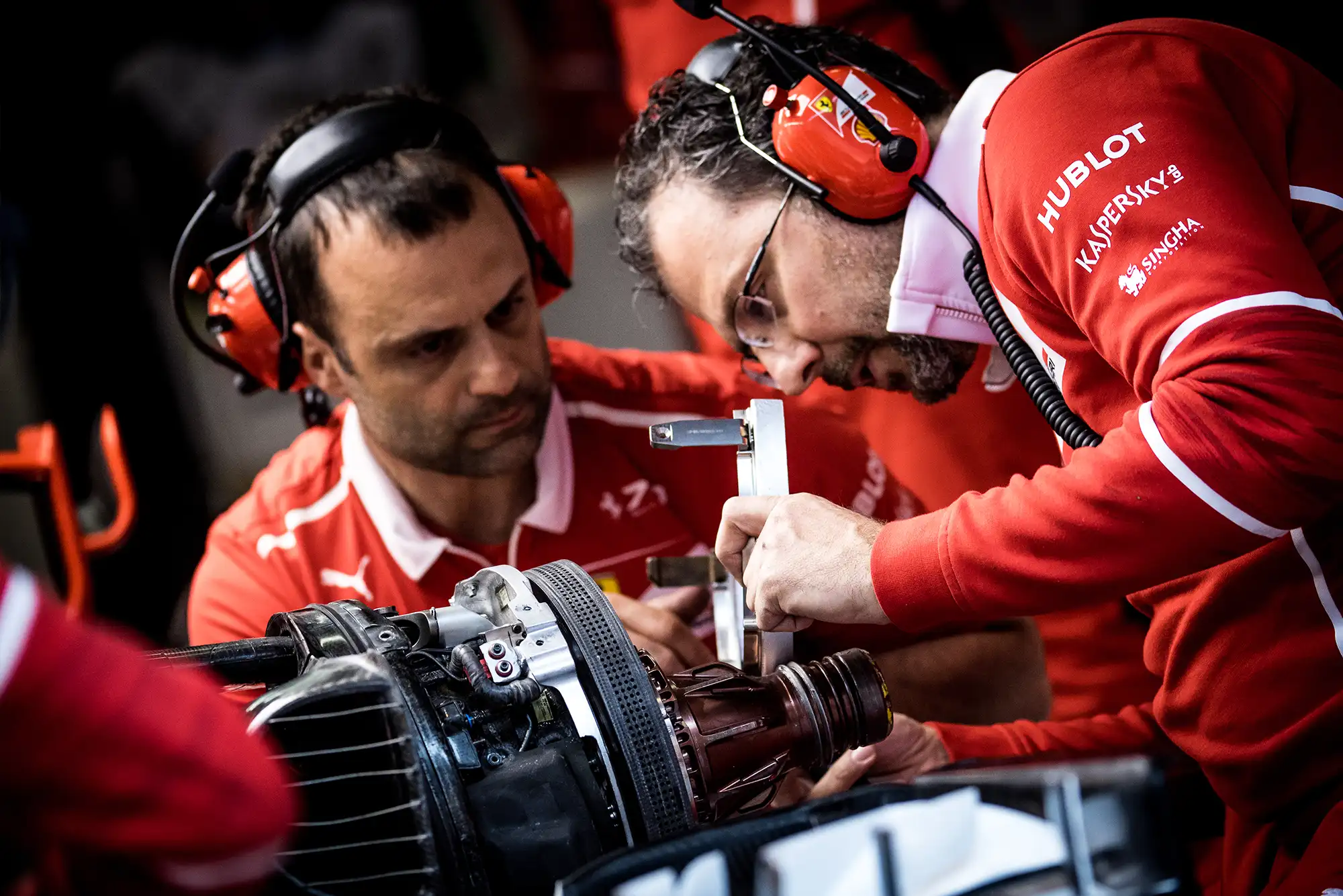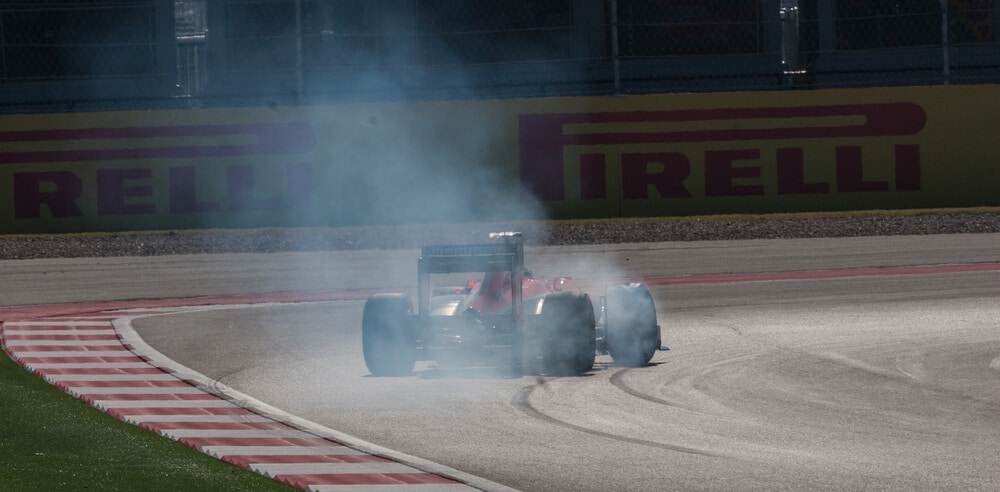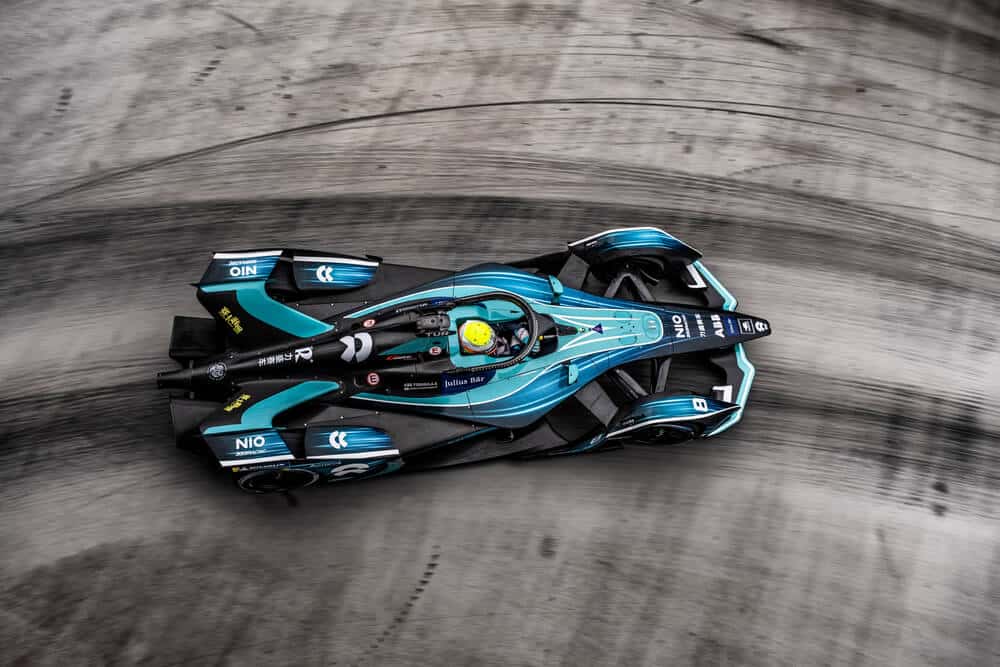Formula 1 has always been at the forefront of innovation to improve overall speed and performance. One of the critical components in achieving this goal is the tires. F1 car tires have been evolving since the beginning of the sport.
The tires currently used in Formula 1 were not always the slick tires we know them to be today. In the past, F1 cars used grooved tires. So, what exactly are grooved tires, and why were they used?
In this article, we will take a look at the grooves in Formula 1. How they work, and the criticisms leveled against them.
What are Grooves (Grooved Tires)?
Grooves refer to the channels cut into a tire’s surface. These channels help increase traction and cornering in wet weather conditions by allowing water to escape quickly from between the tires and the track. It reduces the chance of hydroplaning.
The grooves were first introduced by F1 in 1998 after studies showed them to be more effective and provide additional safety for F1 drivers. However, the grooves were also an attempt to slow down the cars as they had become dangerously fast.
Despite their effectiveness in wet weather conditions, grooves were eventually banned in 2009. Slick tires returned due to their impact on the overall speed of the cars. As the grooves served no purpose in dry weather, they were deemed unnecessary as they reduced the amount of rubber that had contact with the track.
The grooves also helped reduce the likelihood of aquaplaning, or hydroplaning. This is a phenomenon in which automobile tires lose contact with the ground due to a thin layer of water between it and the track.
Now, this purpose is served by intermediate and wet weather tires.
Key Takeaways
Here are some key aspects that you should know regarding grooves in formula 1:
- Grooves are channels cut into a tire’s surface to improve traction and cornering in wet weather conditions.
- The grooves were first introduced by F1 in 1998 as an attempt to slow down the cars.
- Grooves were eventually banned in 2009 due to their impact on the overall speed of cars.
- F1 cars now use intermediate or wet tires to provide grip and speed in wet weather.
- Grooves help reduce the amount of water that gets trapped between the tires and the track.Thereby increasing traction in wet weather conditions.
- Grooves also help reduce the likelihood of aquaplaning or hydroplaning.
Purpose of grooves
Before 1998, F1 used slick tires. To reduce speed and increase safety, grooves were introduced. The goal was to reduce grip through corners by reducing the amount of rubber that had contact with the track. However, teams eventually started utilizing higher downforce designs that counteracted this effort and increased grip.
Let’s take a closer look at why they were introduced in the first place:
How grooves improve safety and reduce tire wear
As we mentioned above, grooves were introduced to slow cars down and increase safety. By adding grooves to the tires, teams had less rubber on contact with the track and thus reducing grip. This reduced the risk of cars spinning out due to high speeds and cornering force.
Additionally, grooves also help reduce the amount of tire wear as they provide additional channels for the heat and pressure generated by the tires to escape through. This helps reduce tire degradation and increase the lifespan of tires.
Comparison of grooveless tires and grooved tires
Grooveless or slick tires are smoother and provide more grip when the track is dry. However, they become increasingly difficult to handle in wet weather conditions. They do not allow the water to escape quickly and can cause cars to aquaplane or lose control.
Grooved tires, on the other hand, have channels cut into their surface. These channels create additional points of contact with the track, reducing the amount of water that gets trapped between them and the track. This increases grip and traction in wet weather conditions, making them safer to use. However, they reduce overall speed as the grooves reduce the amount of rubber that has contact with the track.

Technical aspects of grooves
In 1998, grooved tires were introduced to Formula 1, which meant the teams had to follow specific regulations. The tires had three grooves in the front and four in the rear, all with a minimum width of 14mm. The maximum width was 355mm at the front and 380mm at the rear. As well as a diameter of 660mm or 670mm for wet tires.
The different types of grooves and their effects on performance
There are generally two types of grooves: circumferential and lateral.
Circumferential grooves are the most common type of grooves found in tires and run around the circumference of the tire. These grooves are designed to help disperse water, reduce aquaplaning and increase grip in wet weather conditions.
Lateral grooves, on the other hand, run across the width of the tire and provide increased traction when accelerating, braking, or cornering—especially on loose surfaces.
Currently, F1 cars use intermediate or wet tires, which contain grooves to provide traction and grip in wet weather conditions. Intermediate has lesser grooves than wet tires, while wet has more. The number of grooves can vary depending on the track and weather conditions.
The impact of grooves on aerodynamics and traction
Grooves were introduced in F1 to improve safety by reducing grip levels and preventing high-speed accidents, but they also affected the aerodynamics and traction of the cars.
The introduction of grooves on the tires caused turbulence in the airflow around the car, significantly reducing downforce. This decrease in downforce meant that teams had to opt for bigger and more complex wings, as well as other aerodynamic features, in order to generate the necessary amount of grip and cornering speed.
Apart from aerodynamics, the introduction of grooves on tires also had an effect on traction. The decreased contact patch between the tire and road surface meant that cars were less grippy, leading to slower lap times. However, they significantly slowed down the cars, which was the main objective of the regulations.
Additionally, the grooves enabled more water to disperse away from the contact patch, thus providing more grip in wet weather conditions. This allowed cars to maintain control in wet conditions, which was a major advantage.
Evolution of grooves
Although grooves were initially introduced to reduce speed and improve safety, it soon became clear that they had a significant effect on the performance of cars. As a result, with an unlimited budget at their disposal, teams started to experiment with aerodynamics in order to gain a performance advantage.
How changes in groove design have affected F1 racing
The advent of grooved tires back in 1998 was a response to increased cornering speeds seen in Formula One (F1) racing. Bridgestone was one of the first tire manufacturers to introduce grooves in an effort to reduce speeds and improve safety.
Over time, teams developed aerodynamic devices to exploit the grooves and increase downforce. However, the effectiveness of these devices was drastically affected when two cars were in close proximity due to “dirty air” – disturbed and turbulent air left behind in a car’s wake, due to it moving at high speed. This reduced the ability for one car to overtake another, leading teams to focus on improving their pit strategy rather than wheel-to-wheel racing.
Hence, in 2009 slick tires were re-introduced – with no tread pattern – to increase mechanical grip while reducing the dependency on the aerodynamic grip. This helped in making races more exciting as cars were able to better follow each other on the track.
With Pirelli taking over as the official tire supplier of F1 in 2011, they have further modified the grooved design – introducing different compounds and depths to their tires – with intermediates used on wet or mixed circuits that shift 30 liters of water per second compared to the full wet’s 85 liters. This is more effective strategy since teams will have the option to use a wider range of tire options based on the conditions.
Comparison of grooves in F1 with grooves in other forms of motorsport
If we compare the grooves used in Formula One racing with those used in other forms of motorsport, we can see some key differences.
In F1 racing, the grooves are usually four in number and shallow, with a straight and evenly spaced pattern. On the other hand, other motorsport disciplines, such as NASCAR and endurance racing, often use tires with larger, deeper grooves. Moreover, the shape and pattern of the grooves may be more irregular or angled in other forms of motorsport to provide a better grip on certain types of tracks.
In addition, the design of the grooves may be tailored to specific weather conditions and track surfaces for different types of motorsport. For instance, in wet conditions, wider and deeper grooves may be used to provide better traction and reduce the risk of hydroplaning. Furthermore, the use of grooves in different types of racing can be affected by the rules and regulations of the sport.
Why F1 shifted from grooved tires to slicks
As we discussed earlier, Formula 1 racing shifted from grooved tires to slick tires in 2009 in order to reduce the dependency on aerodynamic grip and increase mechanical grip. This meant that cars would be able to better follow each other on the track, making the races more exciting.
In addition, grooved tires seemed useless when the track surface was dry, as they would not be able to offer the same amount of grip as slick tires. This would result in slower lap times, which is why F1 shifted to slick tires, as they were more suited for dry track conditions. Slick tires also allowed drivers to be more aggressive on the track which in turn opened up the possibility of new strategies being used.
However, it doesn’t mean that F1 has completely ruled out the use of grooved tires. Instead, they are being used more strategically, with teams selecting the most suitable tire option depending on the weather conditions.

Criticisms of grooves
Let’s now turn our attention to some of the criticisms of grooves in F1 racing and counter arguments in support of grooves.
Discussion of the arguments against grooves
The main argument against the use of grooved tires in Formula One racing was that they reduced grip on the track. That made the cars slower and more difficult to control. This inconsistency in grip levels, as the tires wore down, made it harder for drivers to predict how the car would behave.
Moreover, these tires resulted in less exciting races for fans, with fewer opportunities for overtaking and pushing the limits of their cars. This meant that races were often predictable and not as engaging.
Additionally, teams had already developed aerodynamic solutions to maximize grip on the track which meant grooved tires quickly became obsolete.
Counter Arguments in support of grooves
The primary reason for the introduction of grooved tires in Formula 1 was to improve safety. Since cars have become highly advanced and powerful, grooves have helped to reduce their speed. Therefore also reduced the risk of accidents.
Additionally, grooved tires required teams to make strategic decisions which led to more exciting races with unexpected outcomes.
Grooved tires also had a number of other benefits, such as better tire management, a level playing field between teams, and lower costs. By requiring more careful management, grooved tires also helped to promote better driving and more skillful racing.
However, by the end of 2009, grooved tires were still banned in Formula 1 racing.
Frequently Asked Questions
Grooved tires were introduced in Formula 1 racing in 1998 to reduce the speeds of cars and improve safety. The grooves provided less grip than the then-standard slick tires, thus allowing drivers to better control their cars on the track.
Grooves can affect a tire’s performance in different ways. They can affect the tire’s grip, traction, handling, and durability. Wider and deeper grooves may provide better traction in wet conditions but could also reduce grip in dry conditions. Thus, grooved tires require careful management and strategic decisions to maximize their performance on the track.
Yes, slick tires are the standard option for F1 racing and can be used without grooves. Slick tires provide more grip than grooved tires, making them the preferred option when track conditions are dry. However, grooved tires can still be used strategically to maximize performance in wet or mixed weather conditions.
Conclusion
Grooved tires were introduced in Formula 1 racing with the intention of improving safety and providing a more level playing field. However, the tires were met with a range of criticisms and eventually banned in 2009. They were replaced by slick tires, which provided more grip on the track. Teams can still strategically use grooved tires in wet or mixed weather conditions. Ultimately, the decision of which tire to use lies with the teams and their strategic decisions.



